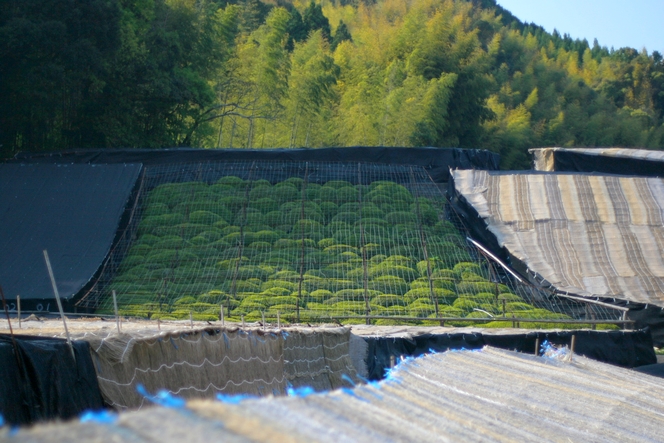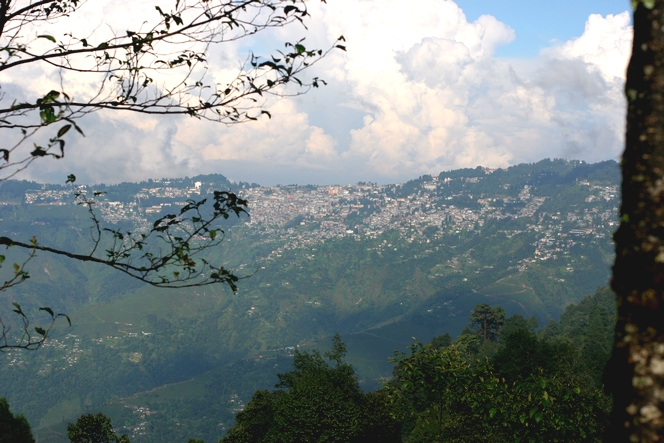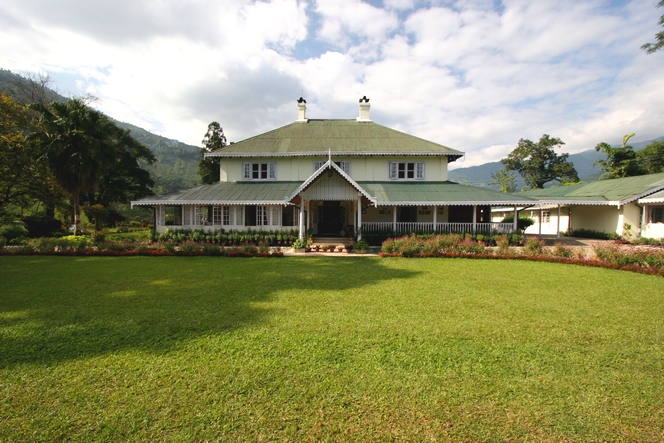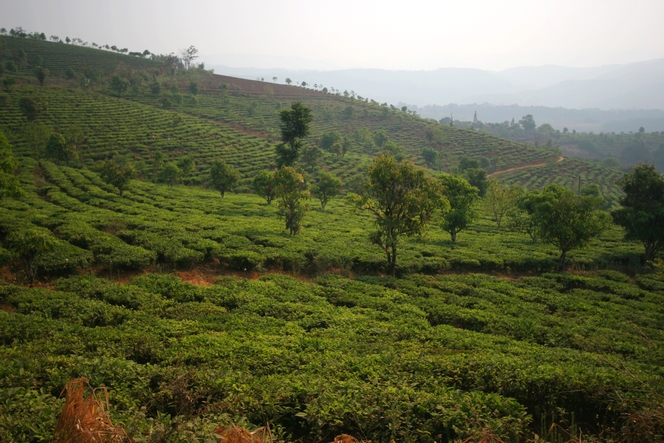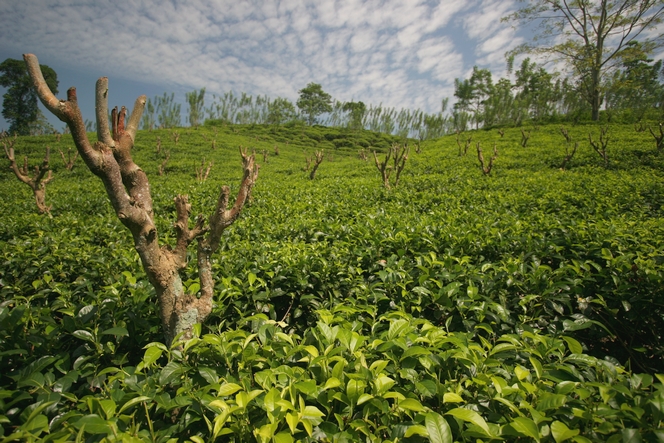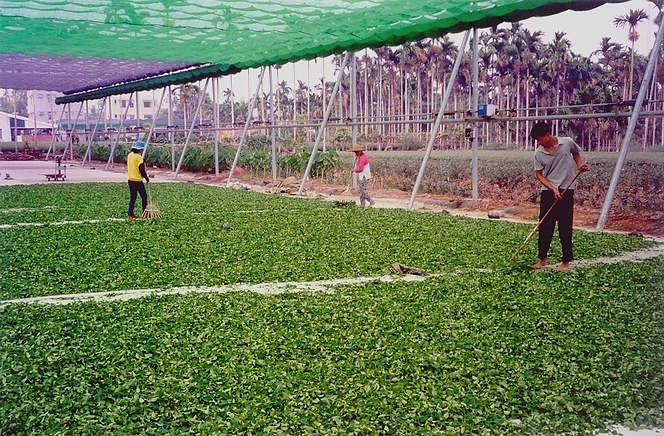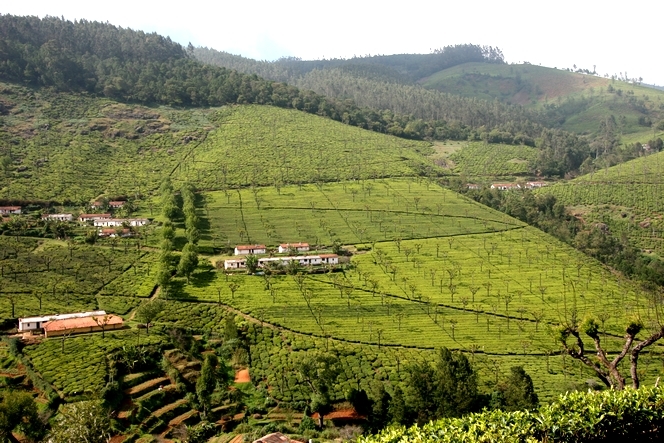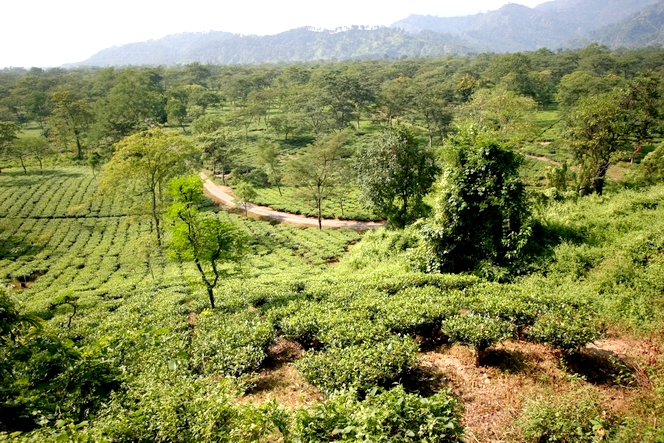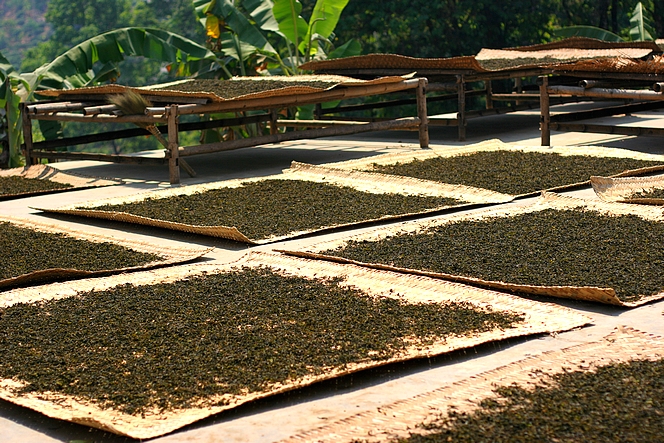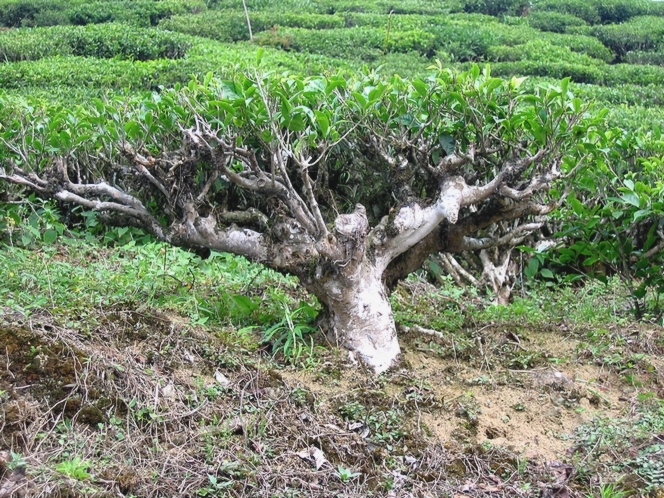In Japan, there are teas grown in the light, and teas grown in the shade. These shaded teas, which are called “Kabusecha” here, are deprived of light for three weeks before harvest. This inhibits the process of photosynthesis in the leaves, meaning the tea plant must draw heavily on its own store of nutrients. This changes the chemical composition of the leaves as well as the aromatic properties.
In terms of flavour, it makes the tea smoother and more delicate, and it develops less bitterness. The best known “Kabusecha” tea is called Gyokuro, which has distinctive dark green, fine, glossy leaves.
In this photo I took very near Shizuoka, you can see how some of the tea plants have been covered by a large tarpaulin to shade them from the light.

